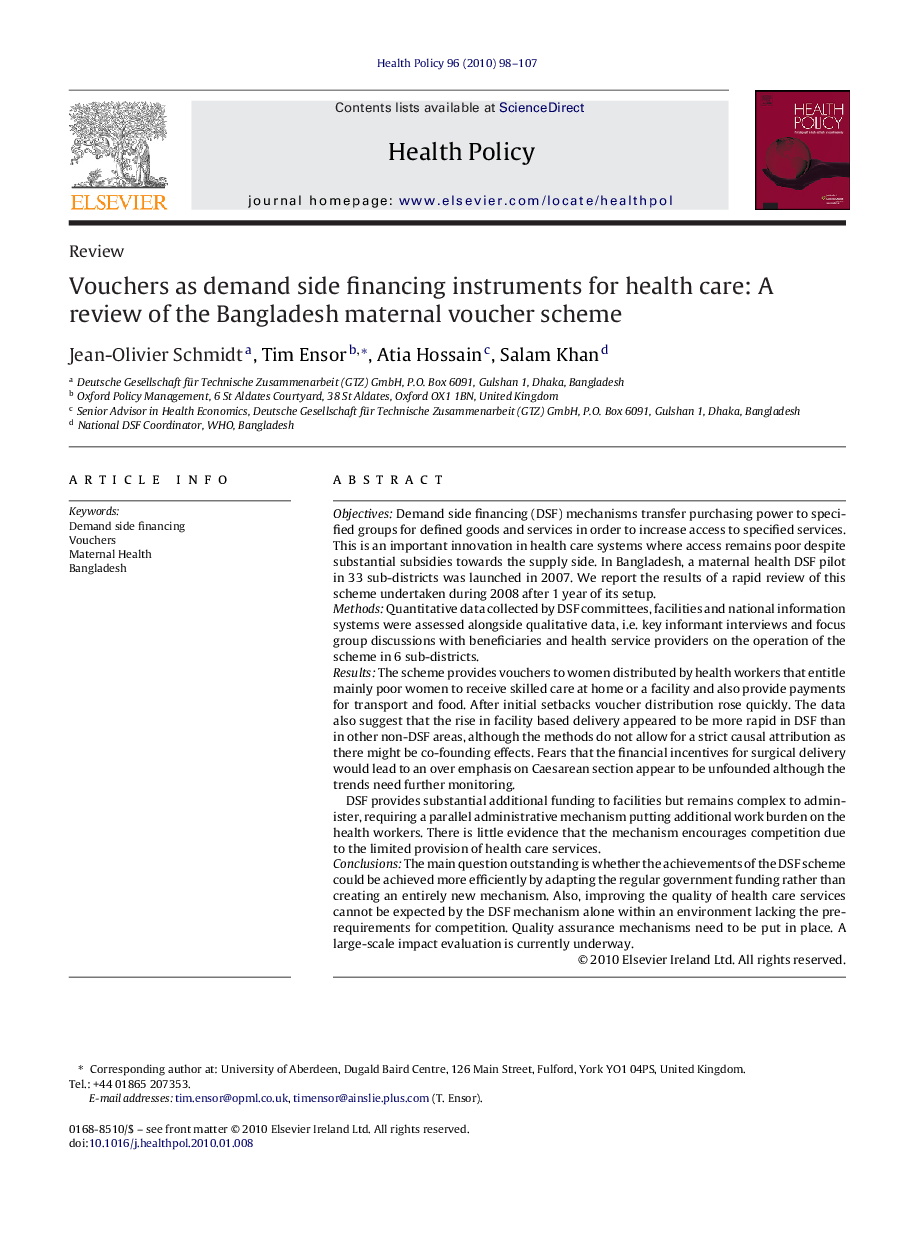| کد مقاله | کد نشریه | سال انتشار | مقاله انگلیسی | نسخه تمام متن |
|---|---|---|---|---|
| 4198273 | 1279048 | 2010 | 10 صفحه PDF | دانلود رایگان |

ObjectivesDemand side financing (DSF) mechanisms transfer purchasing power to specified groups for defined goods and services in order to increase access to specified services. This is an important innovation in health care systems where access remains poor despite substantial subsidies towards the supply side. In Bangladesh, a maternal health DSF pilot in 33 sub-districts was launched in 2007. We report the results of a rapid review of this scheme undertaken during 2008 after 1 year of its setup.MethodsQuantitative data collected by DSF committees, facilities and national information systems were assessed alongside qualitative data, i.e. key informant interviews and focus group discussions with beneficiaries and health service providers on the operation of the scheme in 6 sub-districts.ResultsThe scheme provides vouchers to women distributed by health workers that entitle mainly poor women to receive skilled care at home or a facility and also provide payments for transport and food. After initial setbacks voucher distribution rose quickly. The data also suggest that the rise in facility based delivery appeared to be more rapid in DSF than in other non-DSF areas, although the methods do not allow for a strict causal attribution as there might be co-founding effects. Fears that the financial incentives for surgical delivery would lead to an over emphasis on Caesarean section appear to be unfounded although the trends need further monitoring.DSF provides substantial additional funding to facilities but remains complex to administer, requiring a parallel administrative mechanism putting additional work burden on the health workers. There is little evidence that the mechanism encourages competition due to the limited provision of health care services.ConclusionsThe main question outstanding is whether the achievements of the DSF scheme could be achieved more efficiently by adapting the regular government funding rather than creating an entirely new mechanism. Also, improving the quality of health care services cannot be expected by the DSF mechanism alone within an environment lacking the pre-requirements for competition. Quality assurance mechanisms need to be put in place. A large-scale impact evaluation is currently underway.
Journal: Health Policy - Volume 96, Issue 2, July 2010, Pages 98–107